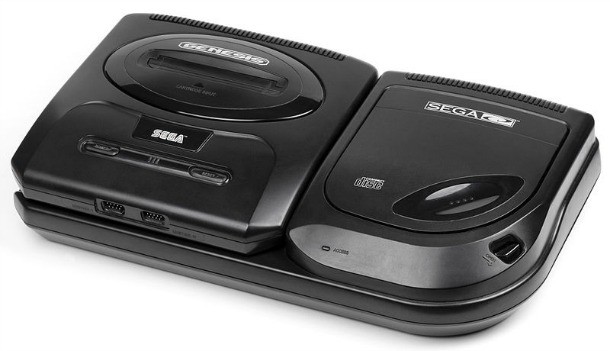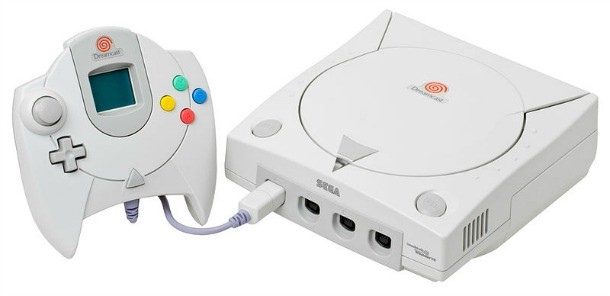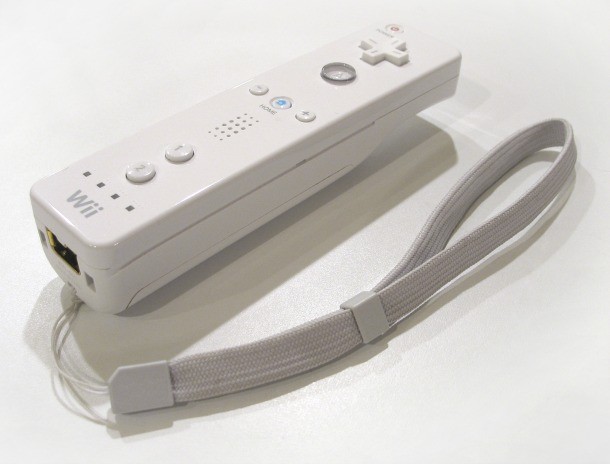Please support Game Informer. Print magazine subscriptions are less than $2 per issue
The Major Milestones In Console Evolution

At their core, the Xbox One and PlayStation 4 are video game systems. However, they contain an array of technology that's built on the innovations of the consoles that came before them. From controllers to online services, these new systems offer more for the gamer than anything we've seen before. This article will attempt to give a summary of how we got to where we are today, marking off some of the major innovations in the console spaces as they happened.

The First Console - Magnavox Odyssey (1972)
Perhaps no machine on this list deserves more praise than the Magnavox Odyssey. The Odyssey is ground zero of the console explosion, the first system that brought gaming out of the arcades and into our homes. While the Odyssey is primitive by today's standards, and only offered a small set of pre-programmed games, it established the concept of a video game console in the public's mind, and paved the way for everything that came after. The Odyssey was designed by Ralph Baer, the man generally considered the father of video games.

Game Cartridges - Fairchild Channel F (1976)
The Fairchild Channel F is now largely a footnote in game history, as it was quickly eclipsed by Atari's VCS, but it's worth remembering that the system pioneered the use of removable game cartridges – and beat Atari to market by a full year. Sadly, Fairchild quickly lost faith in the video game market – thinking it was a fad built around the success of Pong – and ceded control of the industry to Atari. Still, it did manage to release 27 game cartridges (many packagings of multiple smaller scale games) during the lifespan of the Channel F.

Analog Stick - Acetronic MPU 1000 (1976)
While the N64 is generally credited with the innovation of the analog stick, that's far from the truth. In the early days of games, a few systems experimented with analog sticks, including the Atari 5200 and the Vectrex in the early '80s. The Vectrex in particular is notable for having a "self-centering" stick.
However the first analog stick in a home console was actually the Acetronic MPU 1000, an obscure European system manufactured by Radofin was also marketed under the names Prinztronic and Interton. Pretty impressive for 1976.

First Downloadable Games - Intellivision PlayCable (1981)
No, that's not a misprint – I was surprised myself to find that downloadable games date back all the way to 1981. The Intellivision PlayCable was an ingenious (and forward-thinking) little piece of technology developed by Mattel. The PlayCable add-on to the Intellivision allowed users to download a selection of small games into the unit's internal 4K memory. For a monthly fee, you downloaded games from a selection of around 20 into the PlayCable, via the FM band of your cable television link. Unfortunately, the service never really took off and was hamstrung by the high costs that cable operator incurred to run it. Still, subscription-based downloadable games is still considered cutting edge in 2013 with things like PlayStation Plus, meaning that PlayCable was a whole 30 years ahead of its time. Impressive.

The D-Pad - Famicom (1983)
The Famicom (Nintendo's Japanese version of the NES) was released in 1983, and included a controller that would forever change the face of console gaming. The joysticks of past systems were replaced by a simple cross button that used for directional controls. Along with two face buttons, this opened up gaming to new design possibilities, and provided much more accurate control for players. Every console controller that followed is in some way derived from this controller.

Shoulder Buttons - Super Famicom (1990)
Nintendo did it again with the Super Famicom (SNES in North America). After the Famicom controller redefined console gaming, the Super Famicom added two more buttons (for a total of four face buttons) and two shoulder buttons. While the shoulder buttons didn't feel revolutionary initially, time has shown it to be much more important than we realized at the time. For one, it enabled a new level of complexity of gameplay. Also, down the road, these shoulder buttons would evolve into triggers that would help make the first-person shooter a staple of console gaming.

Memory Card - Neo Geo (1990)
The Neo Geo was an ambitious console – it sought to literally bring arcade-perfect gaming to the home with a system that featured the exact same technology as a line of SNK arcade cabinets. The only hitch in this plan was that this tech came at a cost: The unit debuted in the U.S. at a whopping $649.99 (that's over $1,500 adjusted for inflation). This link between the home console and the arcade unit did inspire one lasting bit of innovation: a memory card by which players could transfer their games between home and the arcade. For those of us who grew up writing down long codes, this was a godsend. Unlike the cartridge saves of games like The Legend of Zelda, this also made your game saves portable and not tied to any one specific cartridge.

CD-Rom Drive - Sega CD (1991)
The move to disc-based media was inevitable, but Sega managed to make it to market just before the Phillips CD-i and the PC Engine (TurboGrafx in the U.S.) CD drive. The fact that it was an add-on to the existing Genesis hardware doomed it to being a footnote in history, but the Sega CD did show that disc media was going to be the wave of the future in games; Sony (which had once been contracted to produce a similar add-on for Nintendo's SNES) later took the idea to the bank with the original PlayStation. The Sega CD was also the first home console attachment that allowed for play of audio CDs.

Dual Analog Sticks - PlayStation (1997)
Sony, no doubt inspired by the N64's analog controller, decided to do one better and include two analog sticks on a new controller for its PlayStation console (the original PlayStation controller featured only a d-pad for directional control). In doing so, it unlocked a world of gameplay possibilities. Now, the player could have control over both his/her direction and view at the same time, allowing consoles to more closely emulate keyboard-and-mouse PC gameplay. The full fruits of this move wouldn't be felt for years, but dual analog sticks are now a fundamental part of any console controller worth its salt.

Rumble - Nintendo 64 (1997)
As Sony was creating the modern controller template with its dual analog controller, Nintendo was adding another important piece of the puzzle with the Rumble Pak. This unit plugged into the bottom of the N64 controller, and gave users force feedback and rumble based on in-game events. The Xbox One's high definition rumble takes this feature to new heights, but Microsoft (and everyone else) owes Nintendo a tip of the cap.

Online Gaming - Dreamcast (1999)
Sega had the right idea; online multiplayer gaming was indeed something that would come to define video games in the coming years. The Sega Dreamcast and its SegaNet service was the first official gaming service in industry history (there were some unofficial services like Xband that worked with SNES and Genesis prior, but not manufacturer directed). To drive consumers to its SegaNet service, the Dreamcast was the first console with a built-in modem and also featured a couple of titles, Chu Chu Rocket and Phantasy Star Online, specifically built to promote online multiplayer. Unfortunately, the system didn't last, leaving Microsoft and Sony to take this idea to the bank.

DVD Playback - PlayStation 2 (2000)
Today's consoles aren't just for gaming; both the Xbox One and PlayStation 4 are multimedia machines used as often for streaming Netflix and Hulu Plus as they are for gaming. The roots of the console as an all-in-one entertainment device can be traced largely to Sony, which has always had roots in the electronics and entertainment industry. In the early days of PlayStation 2, the ability to playback the then-cutting-edge DVD movie format was a major selling point for the system, as it was a relatively affordable DVD player and a game machine to boot. Though we've moved on from physical movie media, this is still an important evolutionary step in how we think about consoles.

Hard Drive - Xbox (2001)
Microsoft's background in the PC industry showed in its design for the original Xbox. The unit was extremely bulky, and for good reason: it was the first home console to feature a built-in hard drive. Today, it's unthinkable that there wouldn't be on-board storage, but many wondered if gamers used to memory cards really needed a hard drive. In the short term, the hard drive might have hampered Microsoft's ability to make money on the Xbox, but it was the right long-term call.

Camera Motion Control - PlayStation 2 EyeToy (2003)
Microsoft's big push of Kinect means that it is the company most associated with camera-based control, but the true innovator in the area was actually its closest competitor, Sony. Developed by Sony R&D wizard Richard Marks, the EyeToy for PlayStation 2 was an add-on peripheral that allowed players to compete in small, fun minigames by moving their arms and torsos around. The EyeToy never really became much more than an interesting curio – but some might say the same thing about Kinect.

Motion Controller - Wii (2006)
While, in the long term, Wii might go down as a less-than-satisfying console, it should also be remembered as a pop culture and gaming phenomenon. This was mostly due to the success of the Wii Remote, which used infrared and accelerometer technology to simulate the motions of sports like tennis and bowling. It was the perfect storm: novel, groundbreaking technology that was also instantly accessible to people of all ages. Without the success of the Wii, it's likely Sony would have never made another version of the EyeToy or created the PlayStation Move. It's also likely that the Kinect itself exists as an effort to respond to the breakout success of the Wii.

Touch Pad (2013) - PlayStation 4
Sony's PlayStation 4 is technically superior to the PlayStation 3, and its controller also feature a touch pad, which has the potential to be the next major development in controller design. It's a small pad, but is already being put to good use in launch games like Killzone: Shadow Fall. Of course, it's too early to say if this is the start of something big, or just an interesting experiment. Still, credit to Sony for trying to pack more feature onto an already robust controller.










